Coach 17
November – December 2018
Vagabond rolling stock was centerpiece on the day America changed.
BY GUY CLIFTON
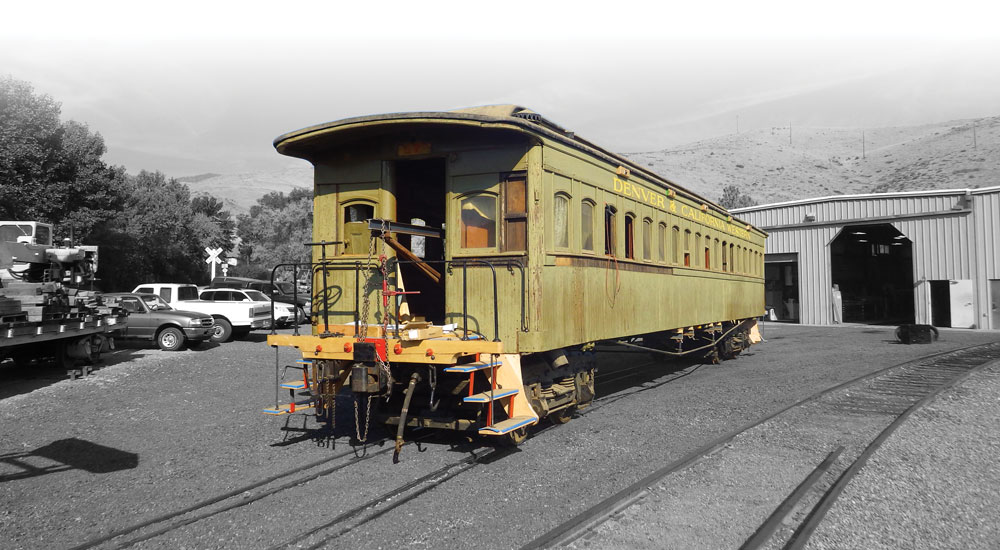
As artifacts go, Coach 17 is not the prettiest piece of Virginia & Truckee (V&T) rolling stock at the Nevada State Railroad Museum in Carson City.
Its exterior is rough, including multiple holes in the siding left courtesy of an untold number of acorn woodpeckers who made the car their personal storage bin as it sat on a southern California movie lot. Its exterior paint is fading and it carries the name of a non-existent railroad, the Denver & California Western, courtesy of the 1984 Clint Eastwood film, “Pale Rider.”
Sitting alongside the Nevada State Railroad Museum’s immaculately restored 1872 McKeen Motorcar and the 1875 locomotives Inyo and Glenbrook, one might think Coach 17 is nothing special.
And one would be wrong.
It’s probably the most important rail car in existence,” says Wendell Huffman, the museum’s curator of history and author of a forthcoming book on the coach.
Built in Sacramento in 1868 by the Central Pacific Railroad, Coach 17 is not only a survivor of 150 years and the oldest piece of rolling stock in the museum’s collection, it is the only rail car still in existence from one of the milestone events in American history—the completion of the Transcontinental Railroad at Promontory Summit, Utah, May 10, 1869.

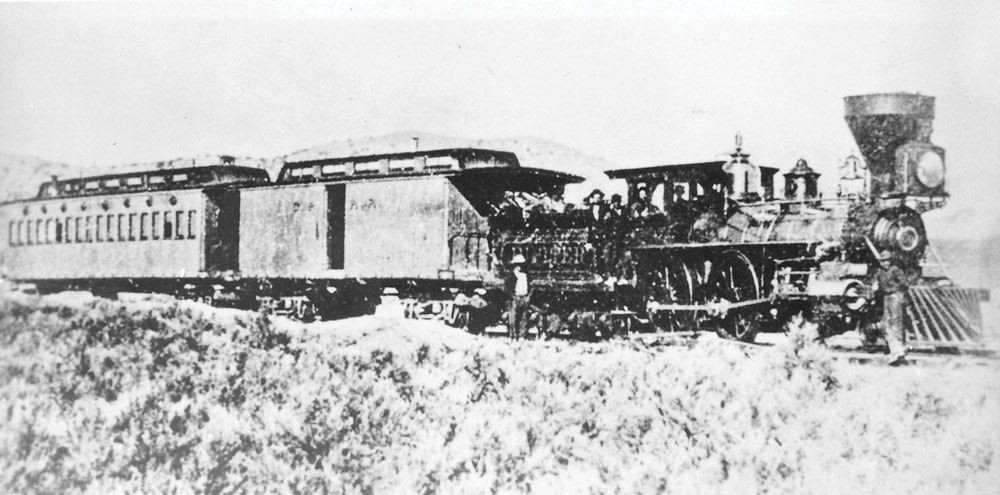
MONUMENTAL MERGER
The completion of the railroad changed America forever, accelerating the country’s industrial growth.
“Before the railroad was completed, it had taken six months to go by sail around the horn because the Panama Canal didn’t exist at that time,” Wendell says. “It took five or six months to go by covered wagon. Now, with the completion of the railroad, you could do it in seven days.”
Coach 17 was there the day America changed—a 20,000-plus-pound witness to history. The coach, then referred to as the Directors’ Car, is the car that carried Leland Stanford, the Central Pacific Railroad’s president, and other Central Pacific officials—and the famous golden and silver spikes—to Promontory for the ceremony.
In historic photographs of the event, the coach can be seen just behind the Central Pacific locomotive Jupiter (a fuel tender and short boxcar in between). At the time, the interior featured a parlor, a bedroom with two beds, a dining room, and a small kitchen. The interior was constructed from California laurel with oak trim and the exterior was California redwood.
Its “official” purpose was as a business car, a place where railroad officials could have some comfort while away from civilization as they toured the rail line. Unofficially, it served as a private car for Charles Crocker, who along with Stanford, Collis Potter Huntington, and Mark Hopkins, made up the “Big Four,” leaders of the railroad. Once the Golden Spike Ceremony was complete and the transcontinental railroad was in operation, Crocker’s intent was to use it as his private car, which he did for a few years, Wendell adds.
NEVADA CONNECTION
So why, one might ask, would a car built in California and made famous in a ceremony in Utah, be an important artifact in a Nevada museum? Enter the Virginia & Truckee Railroad, the railroad that fed The Comstock, transporting freight and passengers to Reno, Virginia City, Carson City and Minden.

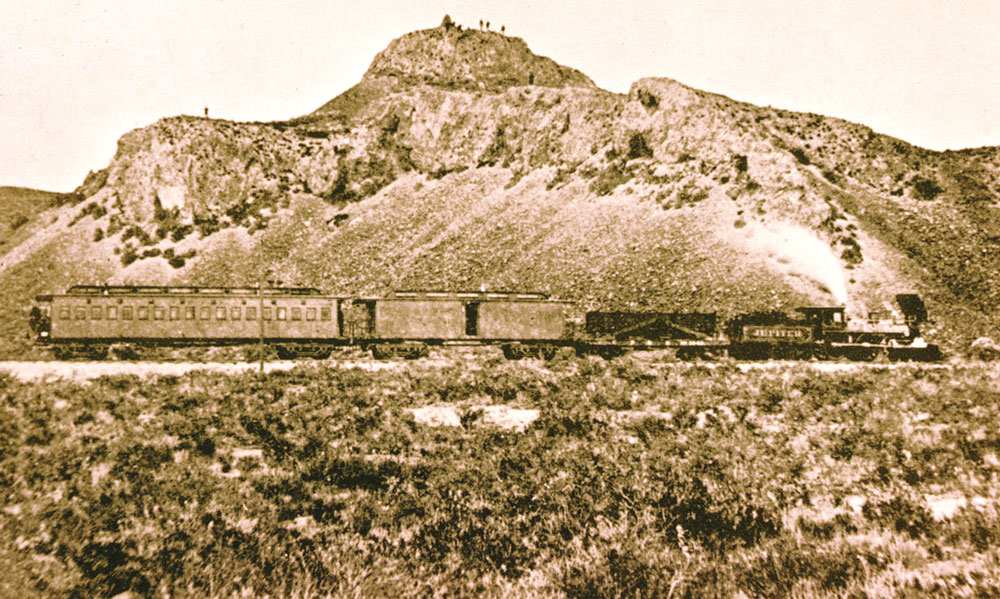
On Jan. 7, 1876, the V&T purchased the car for $2,500, renumbered it No. 25, named it Bonanza, and outfitted it for use as its officers’ car. Among those that used the car extensively were Henry Yerington, the V&T superintendent, and William Sharon, the V&T president and U.S. Senator from Nevada. Yerington used it to travel to the U.S. Centennial Exhibition in Philadelphia in 1876 and Sharon traveled in it to Washington, D.C. John Mackay, the Virginia City silver baron, also used the car to take his family to the East Coast.
In April 1878, the V&T, at a cost of $3,197, remodeled the car into a coach to transport passengers and renumbered it as Coach 17. It remained in operation for many years until hard financial times fell on The Comstock and the railroad. By 1937, the V&T was in receivership and sold much of its rolling stock to Hollywood film companies, most notably Twentieth Century-Fox.
Coach 17, however, was not sold, but leased to the film studio in 1938 for $750.
“The V&T knew it was a historic car,” Wendell says. “They wanted to retain ownership of it.”
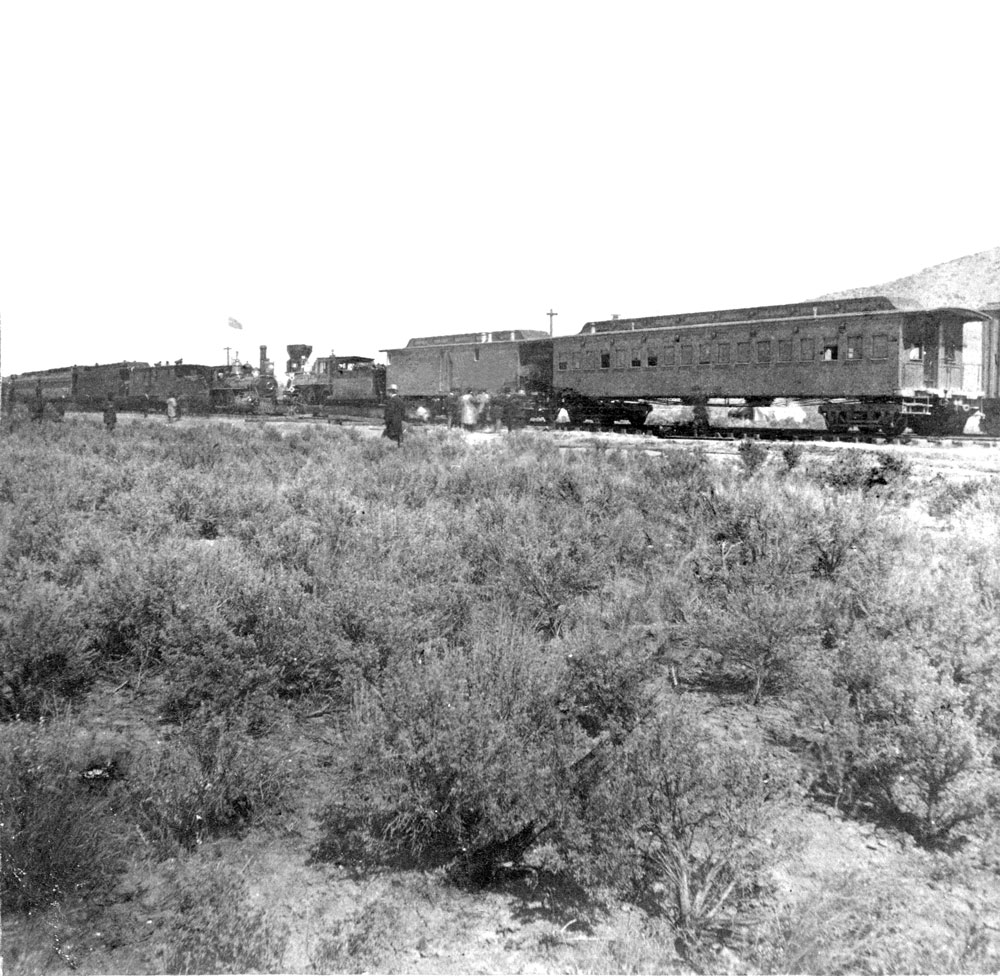
The movie studio even tried to pull a fast one on the railroad in an attempt to keep the car. A year after leasing it, it sent the railroad a letter and claimed the car had been destroyed in an accident. It sent the railroad an additional $877.29 for the loss. The car had not, in fact, been wrecked.
It was used in a number of films, including “Jesse James,” “Centennial Summer,” and the Elvis Presley movie “Love Me Tender.”
“It was Elvis’ first movie,” Wendell says. “If you didn’t know it was there you would never notice it.”
For many years, it sat on a lot outside Malibu, California, not far from where the television series “M*A*S*H” was filmed. In 1972, it was sold to Short Line Enterprises for continued movie service. It was used in one of Kenny Rogers’ “Gambler” movies and made its final Hollywood film appearance in “Pale Rider” with Clint Eastwood.
In 1988, Coach 17, along with a number of other V&T-related artifacts were purchased from Short Line Enterprises by the State of Nevada.
RESTORATION OR PRESERVATION
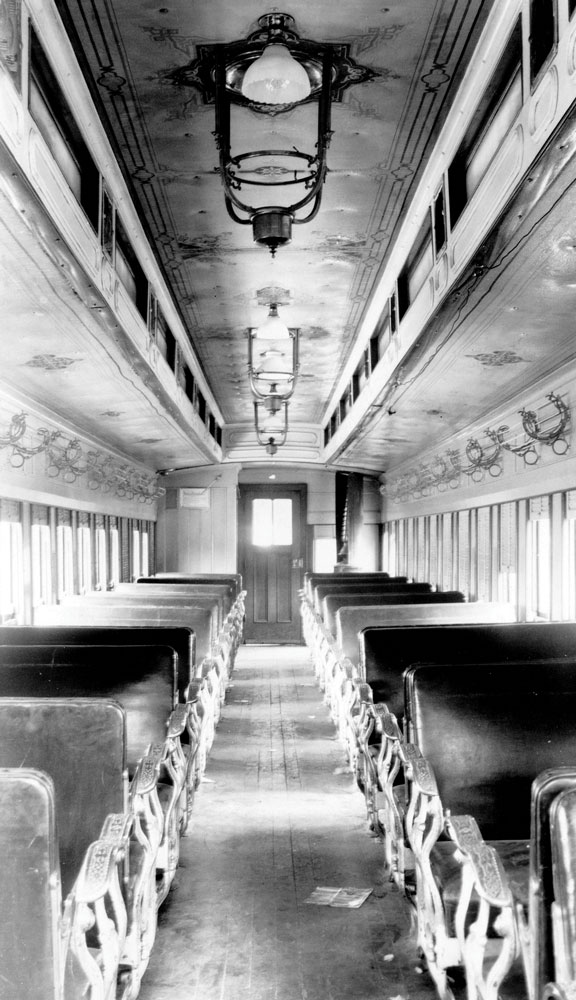
For almost 30 years, Coach 17 has rested out of the spotlight and out of sight in the Nevada State Railroad Museum’s restoration shop. It was in rough shape when it arrived.
“It’s a wooden car built using pretty remedial design criteria in 1868,” says Chris DeWitt, the Nevada State Railroad Museum’s supervisor of restoration. “Just over the years, it slowly deteriorated and there were changes made to it over the years that were detrimental to the car.”
A question museum staff faced was whether to restore the car to either its original 1868 configuration as a luxury car, restore it as a V&T passenger coach of the early 20th century, or preserve the car as a time capsule that could illustrate different periods of its existence. The first two choices meant destroying the car completely and rebuilding it from the ground up.
Ultimately, the decision was made to preserve the artifact—and while it might still look like a weathered and beaten-up railroad car, the restoration staff has spent countless hours in an effort to stabilize the car and to preserve it in a way that the public will be able to view it.

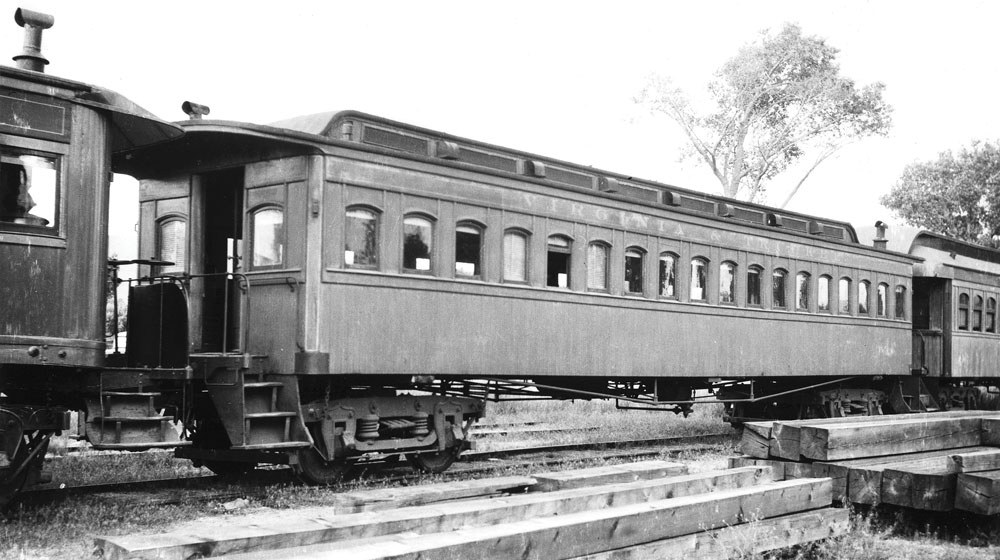
A SESQUICENTENNIAL CELEBRATION
The 150th anniversary of the Golden Spike Ceremony in 2019 has given museum officials the opportunity to showcase their silent star for the first time.
In the first quarter of the year, Coach 17 is set to be moved into the museum’s Jacobsen Interpretive Center and be a key artifact in a new exhibit both recognizing the completion of the Transcontinental Railroad and the role that artifacts later associated with the V&T Railroad played in it.
“We’re going to showcase Coach 17 as the last surviving piece of rolling stock from the Golden Spike Ceremony and we’re going to have our locomotives, the Dayton and the Inyo, a part of the exhibit as they both were used in film to portray the locomotives at Promontory that day,” Wendell says.
A hat tip to Hollywood is well-deserved, he adds.
“If it wasn’t for Hollywood, we wouldn’t have any of these things,” he says. “When the rolling stock wasn’t useful to the railroads anymore, they got rid of it because they didn’t want to have to pay taxes on it. The stuff that is left is only still around because of Hollywood.”
Like a good sequel, Coach 17 is ready to return once again to the spotlight.
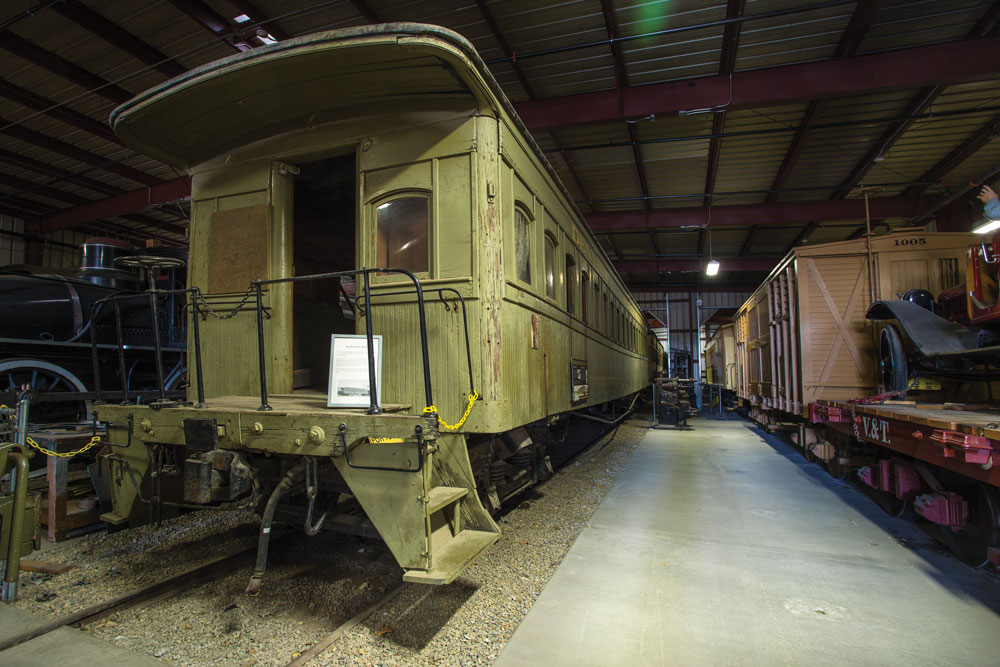

PLAN YOUR TRIP
Nevada State Railroad Museum
2180 S. Carson St.
Carson City, NV 89701
nvculture.org, 775-687-6953

